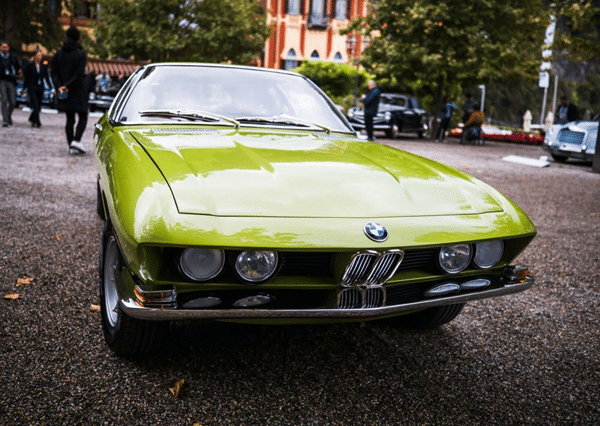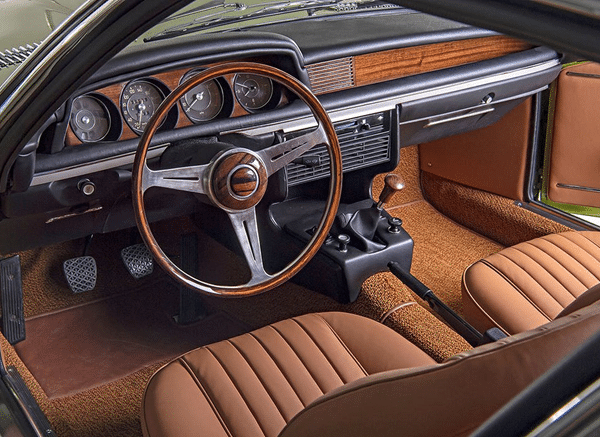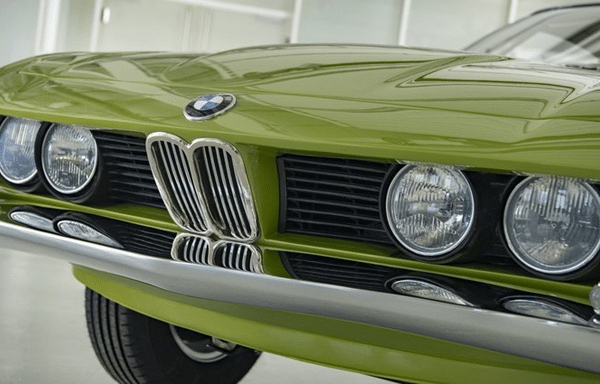
Did you forget about the 1969 BMW 2800 GTS Frua?
Pietro Frua, a leading Italian coachbuilder and car designer. He and BMW decided to come up with something unique. The look was supposed to be eccentric, not just for the engine. The 1969 BMW 2800 GTS Frua was made on the base of the 2800 CS. While the engine and transmission remained the same, the bodywork was totally under the hands of Pietro. With the peculiar styling, the car didn’t appeal well in the tests under BMW. Then, Frua decided to sell the vehicle in Spain by himself. The original car was in red. Being one of a kind, the car went from hand to hand in Spain. In 2017, BMW Classic found the car and decided to restore it. They did it for two years until 2021 when they exhibited the car in the 2021 Villa d’Este Concorso d’Eleganza.

It’s based on the E9
In 1968, the 2800 CS, the first E9 coupés, replaced the 2000 C and 2000 CS. The 2800 CS was what the GTS was based on. The elongated wheelbase and length for the 2800CS meant more space for a better engine, so the car’s engine had a straight six, producing 168 horsepower at 6 thousand rpm. The machine was code-named M30. With a more minor frontal aspect, the car had a performance advantage over its predecessor. It was named the 2800 because the engine was sized at 2,788 cc. The 3.0 CS replaced the 2800CS in 1971 with over 200 horsepower and a 2,986 cc engine size.

Even though the car was never approved for production, one factor that could have expedited its approval was its utilization of the well-established E9 platform, which BMW had been mass-producing and using for their cars for several years by this point. However, while the platform was E9-based, Frua customized the body into a sports coupe design.
How did Frua do it?

Pietro Frua, renowned as one of the leading coachbuilders and car designers of the 1950s, embarked on a mission to propel BMW into the future. He set out to transform the popular BMW 2800 CS, already a respectable seller, into a sports car that would capture the envy of drivers worldwide. The outcome was the 2800 GTS: a sleek four-seater sports coupe featuring a distinctive fastback design and a bold front end reminiscent of the muscle cars from the late 1970s or early 1980s.
It’s a mystery why it never flew off
Even though the car incorporated various components already in mass production at BMW, such as its inline engine and the E9 platform upon which it was built, the company ultimately opted not to greenlight the car for production. The reason for not giving it the go-ahead remains a mystery, although it’s likely that production would have been impractical, making it challenging to ensure profitability. Many aspects that contributed to the car’s greatness were handcrafted and custom-designed by Pietro Frua. Simply put, mass production wasn’t feasible for the specific parts chosen by Pietro.
What happened afterward?
Pietro sold this car to an owner in Spain, where it was repainted. The color was presumed to be red at that time. Although there are many legends about the BMW 2800 GTS and how it was discovered and restored, it was found somewhere in the Netherlands. It had changed its owners twice or thrice by then. The rest is how BMW found the car and was repainted to its original lime green color. How did they know it was the actual color? Interestingly, there was some original paint uncovered under the gas cap. I guess someone wasn’t that good at paint jobs in the 1970’s.
A hint of E3
Notably, the car’s front and rear are borrowed from the E3 as well. The interior also had hints of E3 in it. The most notable aspect was the front end, specifically the lights and grill.
However, it resembles a muscle car with a unique coupe style, somewhat like a Firebird.
How rare is the 2800 GTS?

It was the only car ever produced and is one of a kind worldwide. Some people tried to match this style of Frua’s for their 2800 CS, but nothing compares to this Emerald. This car, after restoration, went back to BMW. BMW regained ownership of 1969 BMW 2800 GTS Frua, and now sits in Munich at the BMW showroom. At this point, it would be worth millions after being restored to its original condition, but a specific price was never tagged to this car.
The heart of the BMW 2800 GTS Frua

Focusing on the heart of the car, let’s explore what lies underneath the hood. Powering this front-engined marvel was an Inline-6, a prevalent choice for BMWs during that era. It roared to life with an impressive 168 horsepower, a figure that, although modest by today’s standards, was indeed respectable in the context of the 1960s automotive landscape. What adds intrigue is that this car retained carburetors instead of adopting fuel injection and boasted a liquid-cooled engine. Today, we often take these features for granted, forgetting they were once considered luxuries. It’s essential to recognize that what is commonplace today was a high-end feature in the past. Envision the luxurious driving experience drivers could have relished if the 2800 GTS had received the green light beyond just the choice of green paint.
The Emerald of BMW

In the grand tapestry of automotive history, the 1969 BMW 2800 GTS Frua stands as a singular marvel. Crafted by Pietro Frua, this car is an artistic statement, blending elegance and power in a distinctive lime green hue.

Rediscovered and meticulously restored by BMW, it now resides in Munich, a testament to human ingenuity. Each curve tells a story, echoing an era of creativity. Confined to a showroom, it seems sacrilegious; this car is not just a relic but a wonder, embodying the limitless potential of human design. It prompts us to wonder how many such gems lie abandoned, waiting to shine again.